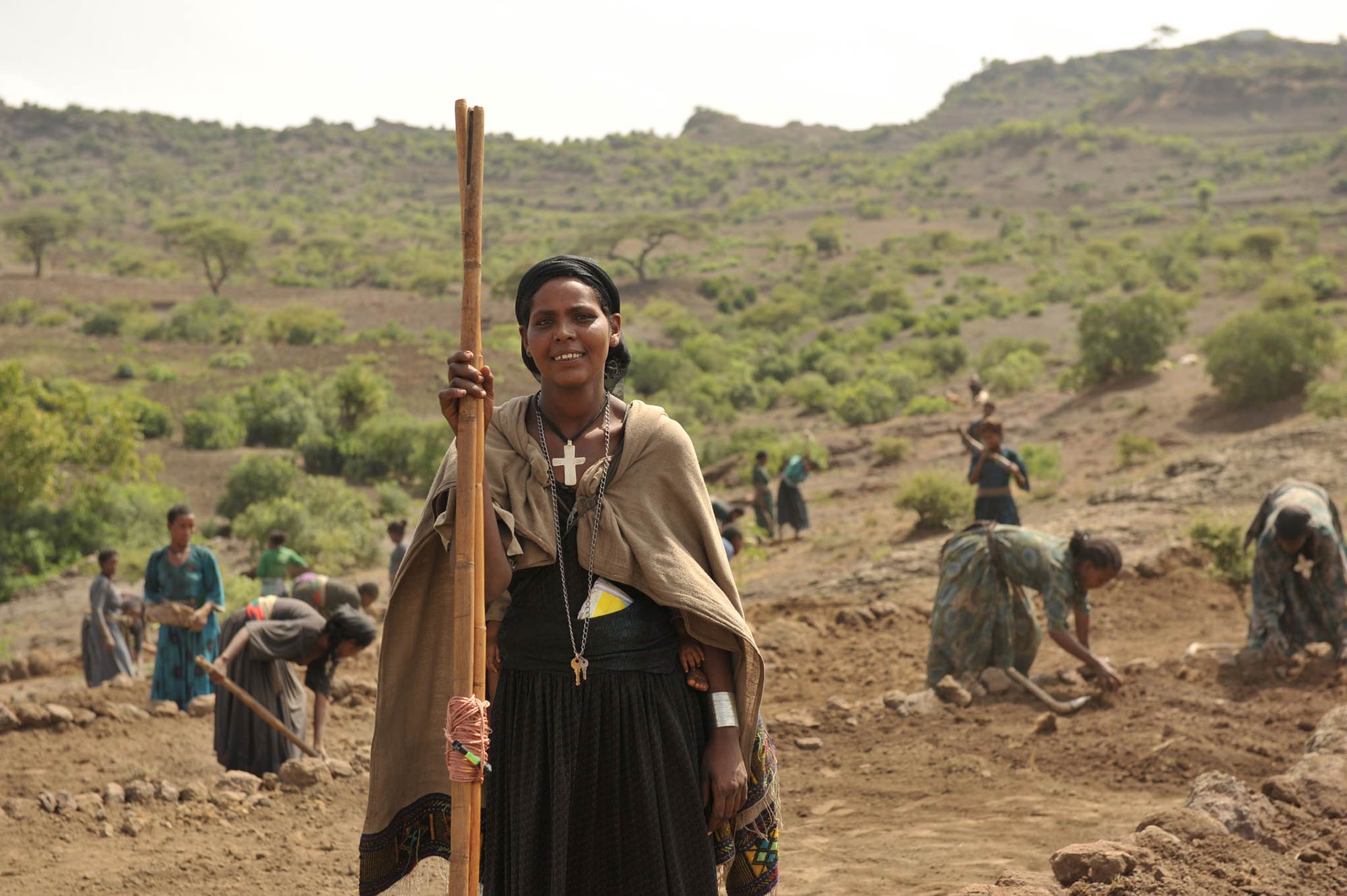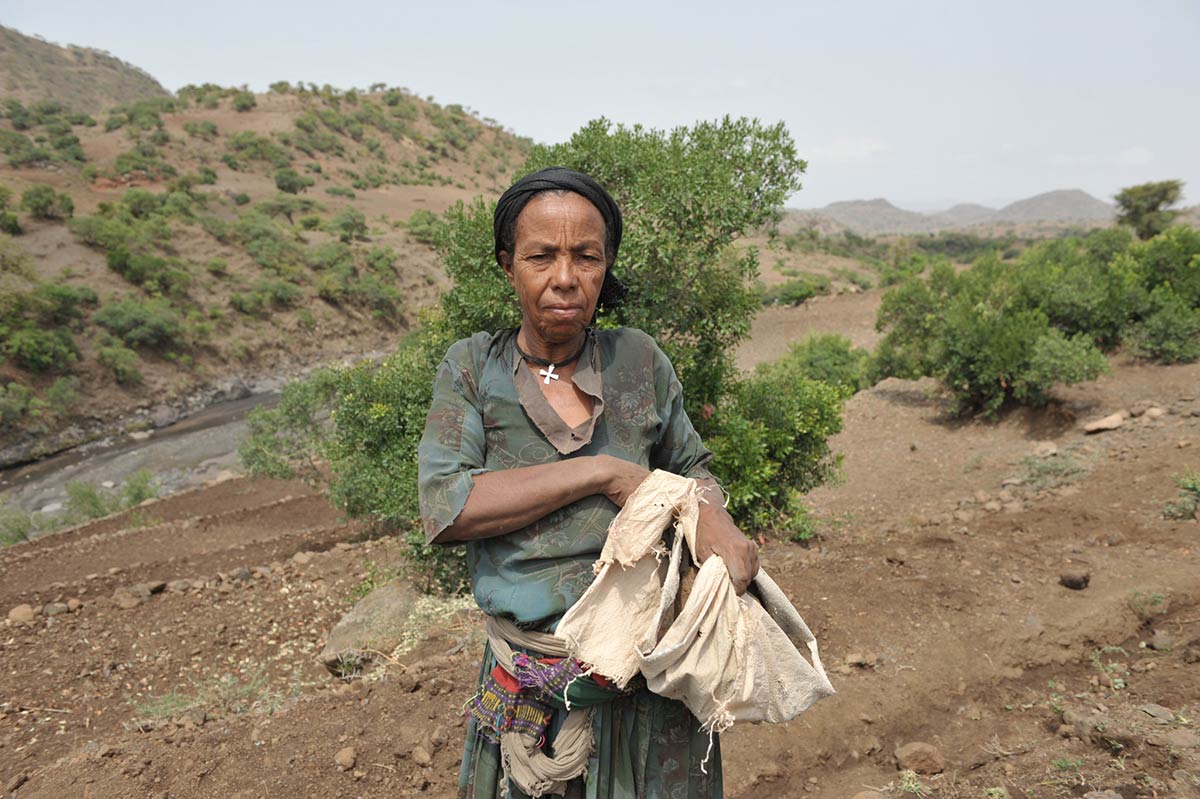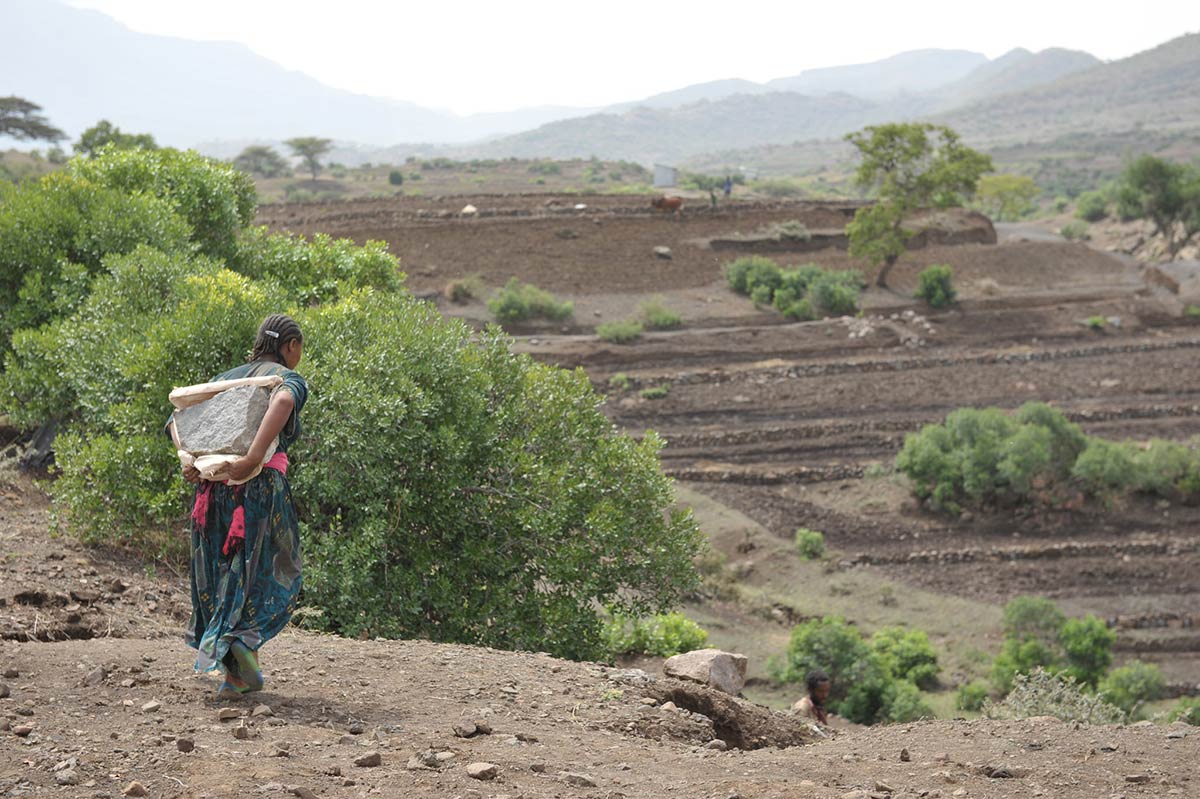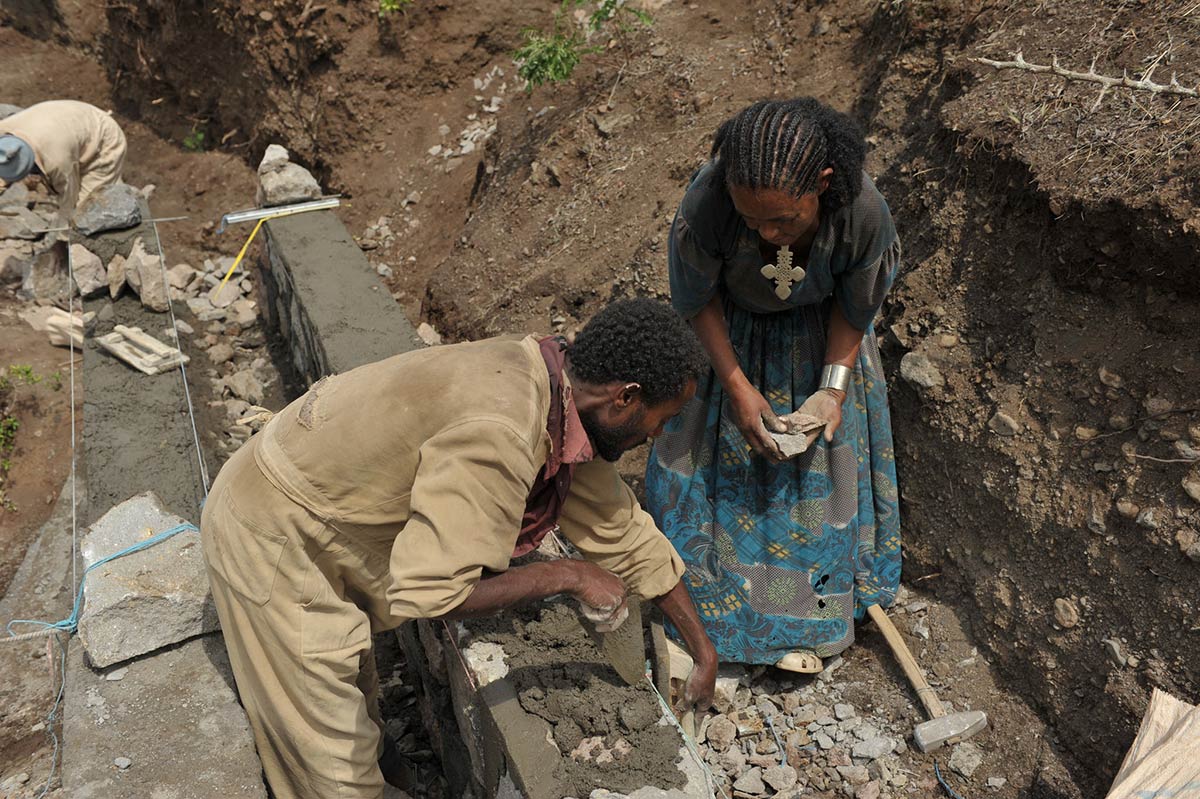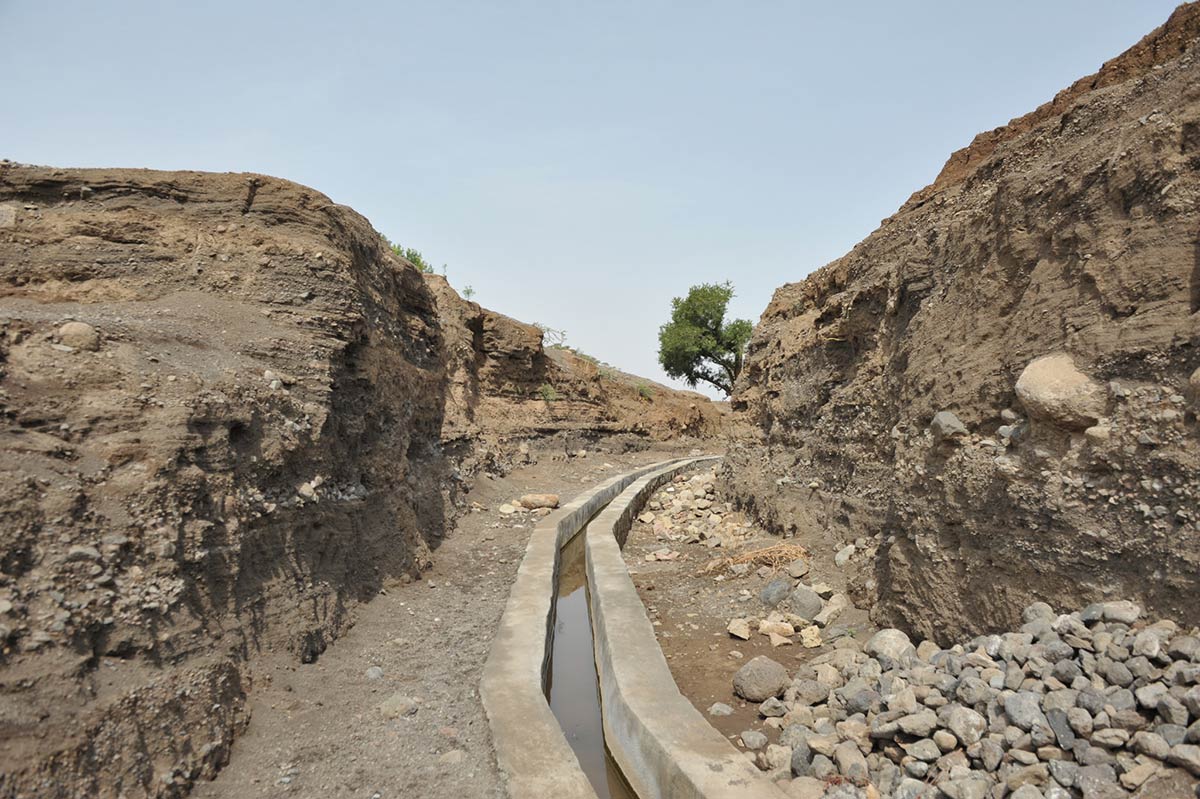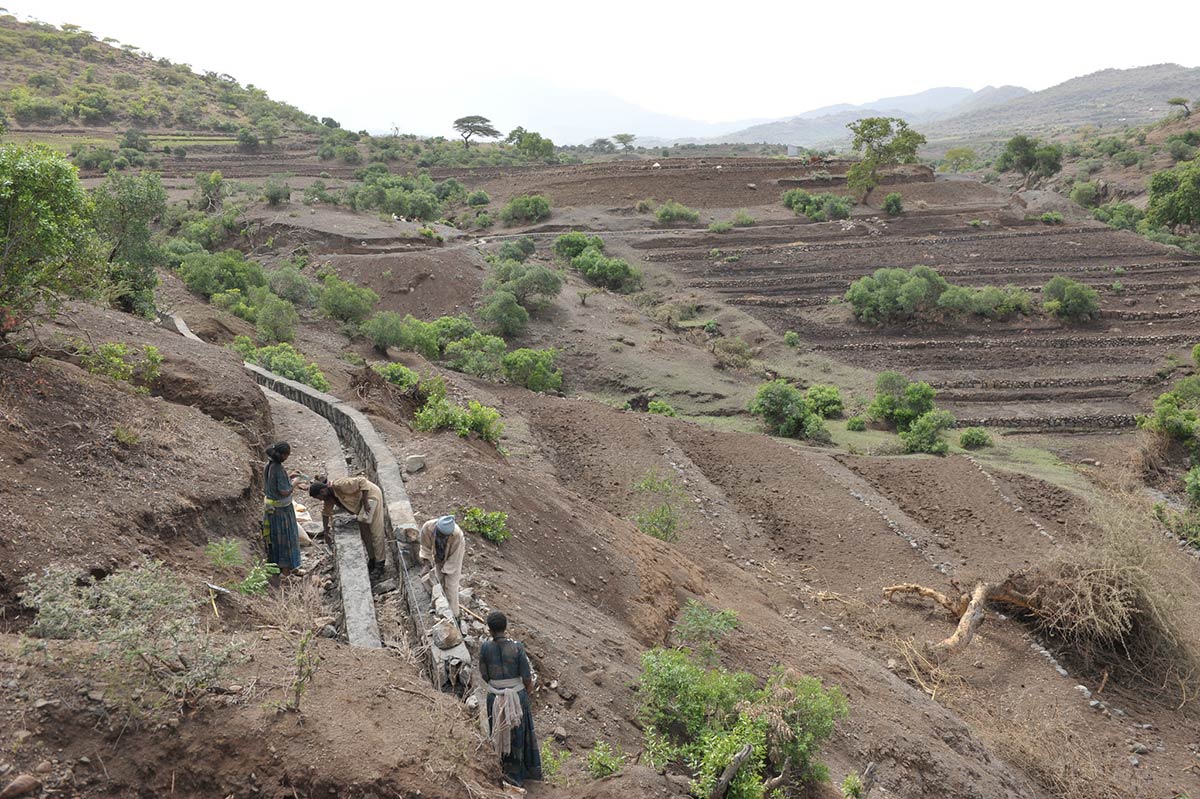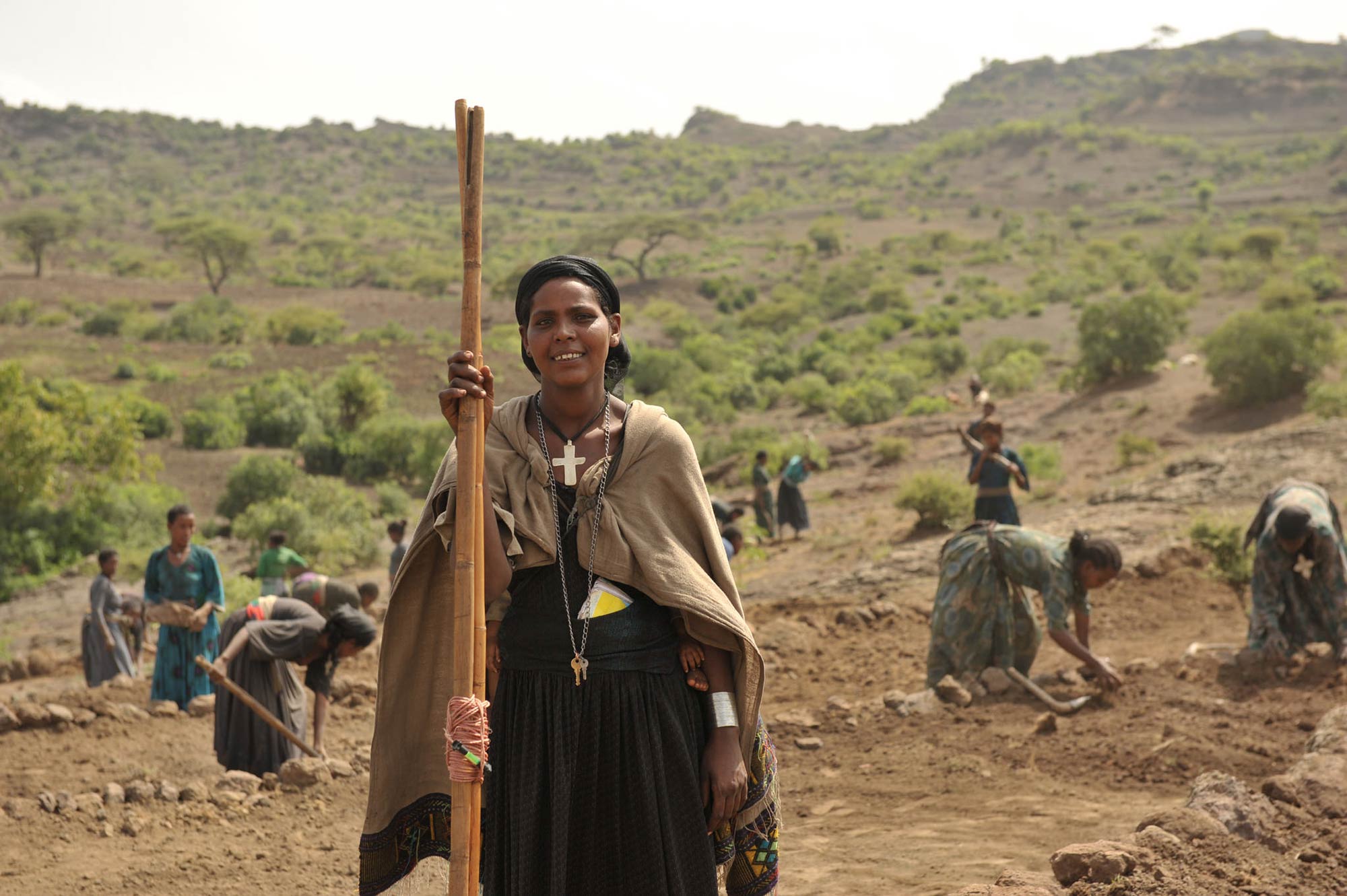
Oct 26, 2017
How to create a forest
When Birzegen Yiman, 30, looks over the construction site, she does not see dust and dirt. She notices the more than 300 women and few men who carry heavy rocks, build terraces and shovel the dark Ethiopian soil. However, when she closes her eyes she can visualize a forest.
“Where there is a forest, there is life,” Birzegen Yimam says. “We create life for the people. In ten years, this region will be completely covered in green.”
Yimam is the surveyor of a project for food security in one of the village districts (Amharic: kebele), run by The Lutheran World Federation (LWF) Ethiopia program and supported by Canadian Lutheran World Relief and Canadian Foodgrains Bank. She measures the lengths of terraces and instructs workers where to place the rocks. The project aims to improve the environment, help people adapt to the changing climate and provide short-term relief to those affected by the drought.
Affected by climate change
Lalibela, in northern Ethiopia, is not only home to the famous rock churches, a UNESCO World Heritage site. The region is also an arid lowland, where water has always been scarce. Climate change and recurrent extended droughts in the past years have made it increasingly difficult for local farmers to continue the rain-fed agriculture they are used to. Left without a livelihood, people started migrating to the cities and even abroad.
Things have to change if the people are going to survive generation after generation in this region. In 2013, LWF introduced the first Food Security Project in different communities in the Amhara region. Since 2015, they are working in Lasta and Lalibela districts.
Budgeted for 3 years, the project is benefiting around 4,670 people, which is almost three per cent of the district’s population, in the villages of Nakutole’ab (Lalibela), Medaghe and Shumsheha (Lasta). It is comprised of different agricultural tasks related to irrigation, fertilizing and seed production.
All these projects make use of tools and fertilizers already available to the farmers, like hoes, sickles and manure from local livestock. A team of LWF experts is teaching them how to get the most out of the land, and how to prevent exhaustion of the soil.
Women do the heavy lifting
Many of the people under Birzegen Yimam’s supervision use the cash for work program on community land for extra income, as the recurrent extended droughts in Ethiopia make it difficult for them to rely on the produce of their own farms. Yimam herself left school after grade seven, “after I had just learned to read and write”, she says. During the past years she has developed from an unskilled worker to becoming one of the supervisors on the project.
“She showed so much promise, interest and capability that the LWF Natural Resource Conservation Officer decided to give her additional training. This is an unexpected outcome of the project. She is truly inspirational,” says Sophia Gebreyes, LWF Country representative in Ethiopia.
Women also do the bigger part of the hard, manual work on the project: They carry heavy stones and prepare the soil, an unusual sight for Western eyes. “It is harvest season,” one of them explains. “The men are working in our own fields.” The women, through the cash for work programme, add to the family income. This way they have access to their own money, which also brings about a change in gender relations in the respective families.
First results
In almost three years, the workers in Lalibela have built channels capable of irrigating 61 hectares of land, benefitting 120 farmers and their families. 179 hectares of community land have been covered with terraces for soil and water conservation and trees.
Yimam effectively works two jobs – when she comes home, she takes care of her children, the meals, the household. Her youngest child is tied to her back, protected from the sun under her long coat. Only two little feet stick out beside her hips. The nine-month old girl is named Workinesh, “Gold”.
Yimam hopes she will play in the forest one day.
Cornelia Kästner is the Journalist for World Service for The Lutheran World Federation
Photos: LWF/C.Kästner. This post originally appeared on LWF’s website.
